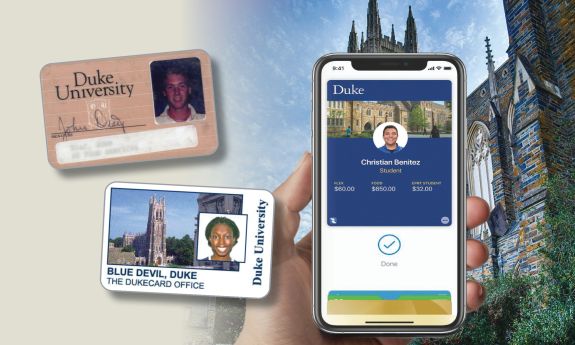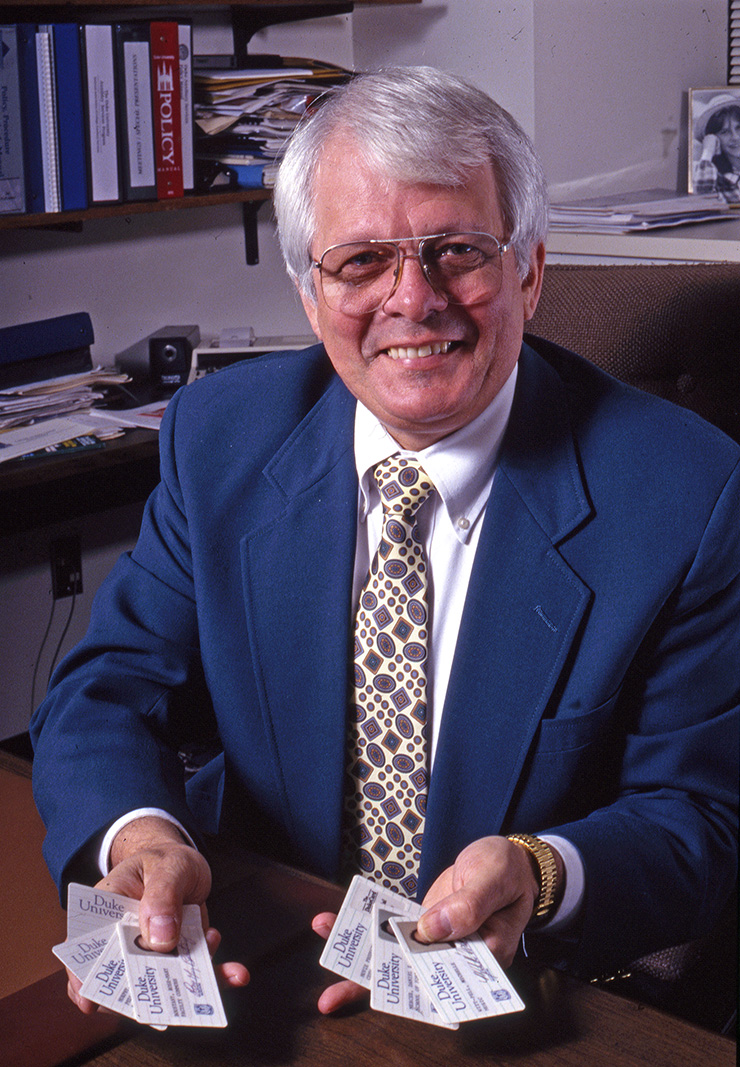70,000 IDs Mark 40 Years of the DukeCard
The DukeCard, also available on mobile devices, remains integral to campus life

Get DukeCard Help
Learn how to set up a mobile DukeCard account or get or replace a physical DukeCard.
“We’re always looking for what’s next,” DukeCard Director Debbie DeYulia said.
For decades, the 3.25-inch by 2-inch plastic DukeCards have been quietly essential constants for staff, faculty and students.
With nearly 70,000 active DukeCards across the university and health system, the DukeCard is also a testament to Duke’s collective creativity.
The DukeCard was the vision of Joseph Pietrantoni, former Duke Associate Vice President for Auxiliary Services, who retired in 2003 after 33 years at Duke.

Using an innovative spirit harnessed in his previous role at GE Aerospace, which developed technology for NASA, Pietrantoni sought creative ways to help Duke function better.
In the early 1980s, Duke’s operational units used disparate systems for identification and payment. That made campus transactions complex for employees and students, who carried separate cards for identification, libraries, dining facilities and entering residence halls.
Pietrantoni saw value in combining all functions on one card, something no university had done before.
“It was a simple solution, one thing that worked with all of these systems,” said Director of Finance for Auxiliary Services Martha Davidson, who has worked with the DukeCard since 1998. “It’s still solving problems today.”
The first DukeCards released in 1985 served as campus IDs, worked with student meal plans, could be used to pay at campus dining facilities and stores, enter buildings and check out library materials. Later, staff at Duke University Hospital got DukeCards. With its versatile magnetic stripe system, adding more capabilities to the card was simple.
Soon, DukeCards worked with vending and laundry machines, parking readers, athletic event ticketing and even a few local pizza joints.
“People who lost their card would be pretty rattled,” said Duke Law School Staff Specialist Darlene Willis, a DukeCard office staffer from 2004 to 2012. “You couldn’t function without it. Everything was on that card.”
In 2016, new microchips in the card allowed Duke to use wireless readers across campus for building entries and purchases. And in 2018, adding DukeCard capabilities to mobile devices created an even easier way to use Pietrantoni’s pocket-sized game-changer.
“He’d love it,” Davidson said about Pietrantoni, who died in 2017. “Joe always told us to keep things simple, so they’ll keep working for a long, long time.”
Send story ideas, shout-outs and photographs through our story idea form or write working@duke.edu.
Follow Working@Duke on X (Twitter), Facebook and Instagram and subscribe on YouTube.